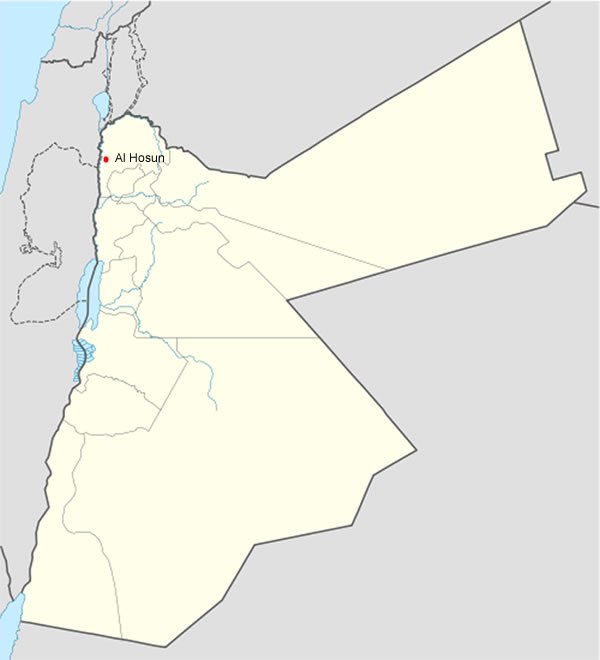Setting
Al-Husun is a town in northern Jordan, located 65 km north of the capital, Amman, and about 7km south of Irbid city. It has today a population of 33,000 inhabitants.
The Mediterranean climate with the warm and dry summers and mild & wet winters prevails in Al-Husun. The annual average temperatures range between 12-23 degrees Celsius and the average annual precipitation is 300 mm.
The region has fertile soil which along with the moderate climate allows the growing of high quality crops. Al Husun was known up until recent times for a number of products, such as wheat and olive oil. Actually, in antiquity the region was well known also for its wines.
The area is a mixed type of urban or rural features. The city is situated in a significant geographical location in the route connecting Amman with Irbid, the second largest city in Jordan. The area has also significant cultural assets and has contributed to the history of the whole region.
The town of Al Husun is a medium size old city the life of which goes back thousands of years and it is believed that it was populated most of the time. Its modern Arabic name “Al Husun” (also spelled as Al Huson, Hisn and Husn) means “the Fort”, however it is possible that it is the ancient Dion city, and was part of the Decapolis (deca+ polis = 10 cities).

Hydria Virtual Museum
Decapolis was a Greco-Roman federation or league of ten cities on the eastern frontier of the Roman Empire in Syria. Except for Damascus, the Decapolis cities were by and large founded during the Hellenistic period by the ageing Generals of Alexander the Great between the year if his death 323 BC and the conquest by the Roman General Pompey in 63 BC. Within the Roman Empire, these 10 cities were allowed some political autonomy within the protective sphere of Rome. In the Roman Era it is estimated that Al Husun had 3000 inhabitants.
The Romans certainly left their cultural stamp in the area, but in the coming centuries a number of civilizations have flourished such as Umayya, Abbasids and the Ottomans (Al Husun was conquered by the Ottoman Army in 1680).
As al Husun is situated in a strategic geographic location (just 6 km from the Irbid, 70 km from Amman and less than 40 km from main cities such as Ajlun and Jerash), it became an important commercial and cultural centre in northern Jordan in addition to the human resources it has.


